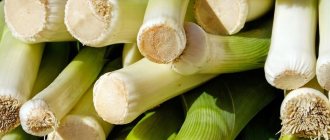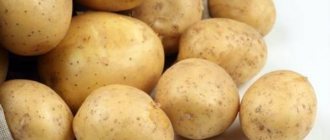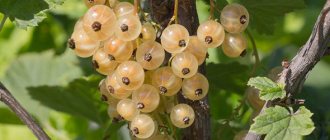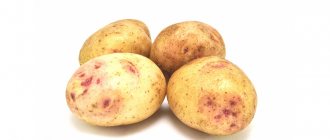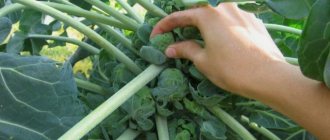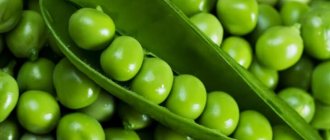The benefits and value of lettuce in our daily diet are difficult to overestimate. Our good friend lettuce salad, although moderately unpretentious, also has the right to attention and participation in its needs on our part. After all, the result obtained will sooner or later end up in our plate? And so that it does not disappoint you, we will tell you in an article prepared by the editors of the KustRoz.ru website about some of the intricacies of growing lettuce and the features of caring for it.
Lettuce - what kind of plant is it?
Lettuce is a cultivated vegetable from the Asteraceae family. Lactuca sativa received its biological name in 1753, when it was described by Carl Linnaeus. Lettuce is a herbaceous plant that produces seeds in the first year of life. In fact, this is our usual, ordinary salad. It should not be confused with Chinese lettuce, which we know as Chinese cabbage - a plant from the Cruciferous family.
In addition to the international scientific name, it has the following names:
- Capitata (L. capitata)
- Curly (L. crispa)
- Dragana (L. dregeana)
- Leaf (L. laciniata)
- Palm (L. palmata)
Lettuce has more than 1000 varieties and hybrids
Lettuce: medicinal properties and uses of lettuce
Good day, dear visitors of my blog Traditional Medicine. Thank you for visiting this page in search of new information. In this article you will become familiar with the medicinal garden plant lettuce, its medicinal properties and use in folk medicine.
Compass lettuce|Lactuca serriola L. (LACSE) |Aster family Asteraceae| Asteraceae Compositae
● Among medicinal plants there is one interesting group - lettuce. By the way, garden salad also belongs to lettuces. There are three types of lettuce: compass lettuce, seed lettuce and wild lettuce. The first grows, with confidence, right under our feet, although it has high healing properties. Today's article will describe compass lettuce. This biennial herbaceous plant with white milky sap belongs to the Aster family. Lettuce has a hard stem covered with stiff bristles. Sessile leaves without petiole, the lower ones are larger and pinnately cut.
● A characteristic feature of this type of lettuce is the presence of stiff bristles along the midrib of the leaf. And also - in relation to the stem, the leaves are placed edgewise and with their pointed ends pointing to the south and north, which is why it received the name compass lettuce. It has small flower baskets of light yellow color, collected in a pyramidal panicle. The plant reaches a height of up to one meter. Externally, lettuce in some way resembles the ubiquitous weed sow thistle.
● Compass lettuce grows in the middle and southern regions of the European part of Russia, in the south of Western Siberia, the Caucasus and Central Asia. His favorite places: river banks, roadsides, fields and gardens of estates.
Medicinal properties and uses of lettuce
● In folk medicine, the above-ground part of lettuce (flowers, leaves and stem) is used for medicinal purposes. Lettuce preparations dull pain sensitivity (analgesic property), stops seizures, and has effective laxative, diuretic, hypnotic and sedative properties. As a pain reliever, the plant is most often used in the form of infusions to treat insomnia, shortness of breath, persistent cough, whooping cough, chronic bronchitis and bladder diseases (stones, cystitis). There is reliable information about the use of lettuce for the treatment of gout.
● In the republics of Central Asia, where the heat is unbearable, lettuce infusion is drunk as a tonic and cooling agent, and powder from its leaves is sprinkled on wound surfaces that take a long time to heal. When ingesting lettuce preparations, extreme caution should be exercised, as the plant is poisonous. To do this, it is enough not to exceed the permissible dose. For headaches, lettuce infusion is taken 5-6 times a day, one tablespoon. By increasing the dose to 2 tablespoons, it can be used as a laxative.
● For insomnia, on the contrary, the infusion should be less concentrated (half a teaspoon per glass of boiling water). As a heart remedy, the use of lettuce in combination with oregano is effective. For this purpose, take one teaspoon of oregano and add half a teaspoon of lettuce, brew with a glass of boiling water and leave for one hour, then filter. Take a tablespoon for heart pain three times a day after meals.
● For the treatment of kidney diseases, lettuce infusion has an even lower concentration - half a teaspoon of raw material per two glasses of boiling water. To enhance the effect of the medicine, you should add a teaspoon of crushed lingonberry leaves. Dried lettuce juice in powder form is also used to treat diseases. Dissolve one coffee spoon of crushed raw material in half a liter of boiled water and take two tablespoons three times a day after meals for insomnia and headaches.
Recipes for using lettuce in folk medicine
● For convulsive colic of the intestines and stomach, prepare a salad: mix 10 parts of garden lettuce and one part of fresh lettuce leaves, chop and salt, add sour cream, apple cider vinegar or honey to taste. Eat 50 grams of salad in the morning and evening.
● To anesthetize painful areas on the body in the form of rubs and compresses, use lettuce tincture: 50 grams of raw materials (leaves), pour half a liter of vodka and leave in the dark for 14 days, then strain.
● To treat long-term non-healing wounds, you can use powder from dried lettuce leaves in the form of powders or dressings (a damp cloth is sprinkled with powder and applied to the sore spot). To obtain a powder, you need to grind the dried leaves in your hands and sift through a sieve.
● For insomnia and headaches, take 1 tbsp. l. three times a day lettuce infusion (1 teaspoon of raw material, pour 300 ml of boiled chilled water, leave for 4 hours and strain).
Article on the topic: Nettle leaf bell - beneficial properties, description
You can find more information about compass lettuce on Wikipedia.
Be healthy, and may the Lord God help you in this.
History and distribution
Lettuce is a plant with a dark past. Scientists have not been able to establish its place of origin. There are suggestions that the ancestor is compass lettuce, now growing wild on the southern shores of Europe, all the coasts of Western Asia, North Africa, the Transcaucasus and Siberia up to the Altai Mountains.
Spread around the world
But does it really matter if the history of culture goes back to the prehistoric past? When studying Egyptian tombs, plants were identified in the paintings, presumably similar to romaine lettuce. Charles Pickering proves that the Roman vegetable has been known to gardeners since the 6th century BC. The narratives of Herodotus say that in 550 BC. the salad was delicious and was served to the table of the kings of Persia. The vegetable came to Ancient Greece from Egypt. Initially it was used as a medicine. Lettuce is mentioned by all famous scientists of that time: Aristotle, Hippocrates, Dioscorides, Theophrastus.
The ancient Romans first consumed salad as a dessert dish, and later as a snack, which helps digest food. Under Emperor Augustus, the leaves began to be prepared by pickling with a mixture of honey and vinegar.
The agricultural encyclopedia of Byzantium "Geoponics" (10th century AD) lists several types of lettuce. For each, a description is given, sowing time, and care methods.
Since the times of Charlemagne's campaigns, salad has found its way to Central Europe. In the 8th century, large feudal estates and monasteries had areas of orti-horti (native garden) where lettuce was grown in significant quantities.
From literary sources it is known that in 1494 Lactuca was grown on the island of Isabella. Peter Martyr points this out. Niehoff reports that AD 1647 saw a cultivated species in Brazil. In 1565, Benzoni spoke of lettuce growing everywhere in Haiti.
Under Charles I (XIV century) brought to England. As a vegetable, lettuce has spread widely across the European continent. If in France at the beginning of the 17th century 6 varieties of the plant were known, then by 1720 47 varieties were cultivated in Holland.
East Asian countries have become more fond of asparagus and leaf varieties of lettuce. Headed varieties were known to the Japanese back in the 10th century, but only towards the end of 1863 did the first description of such a variety appear. After the Japanese War, varieties were brought into the country from the USA and France. At first, the leaves were used to decorate dishes, later the oily and crispy leaf varieties began to be cultivated.
Appearance in Russia
On the territory of Russia in the 17th century, green plants were not planted or eaten. The indigenous people laughed at the “grass-consuming Germans.” Industrial cultivation of vegetables began in the mid-19th century. Lettuce gained its importance in St. Petersburg vegetable gardens. In February, they asked for 50 kopecks per pound of vegetables. The following varieties were cultivated in soil culture: Golden Apple Tree, Algerian, Stone Head. Steinkopf and Berlin yellow were grown in protected soil conditions.
In 1913, lettuce was grown in the northern regions of Russia, the Central Volga region, Siberia, and the Caucasus.
After the reconstruction of socialist farming, cooperatives of gardeners began to be created near all major cities. In 1923, a labor cooperative in the Moscow region grew dill and lettuce of the Berlin, Zhidelevsky, and Parisian varieties.
Industrial growing of lettuce
QUESTION ANSWER
Have you heard that lettuce can be used as a thickening agent? What plants are best to plant it with?
Leaf lettuce can be sown with slow-growing crops such as carrots, parsnips, celery, in a ratio of 1:10. It goes well with beets, beans, chard and leeks.
As a ground cover crop, it is used among different types of cabbage, and red-leaved varieties look great in borders with flowers. Young lettuce plants selected during breaking are planted in the interstice rows of strawberries, placed among cucumbers, zucchini, and along the edges of beds with onions or winter garlic. Romaine lettuce can serve as a sealer for early cabbage and cauliflower.
FROM THE EXPERIENCE OF GARDENERS
Everyone in our family loves fresh greens. We especially like to prepare summer salads from fresh, just-picked lettuce with cucumbers, dill, parsley and onions. We are trying to diversify the menu and decorate the garden. This is easy to do with salads.
I divide the semicircular bed into sectors. I prepare the soil in the fall, dig it up, add 1-2 buckets of compost, 15-20 g of nitrophoska per 1 sq. m. m. In early spring, at the beginning of May, I sow lettuce seeds in each sector. Before sowing, I loosen the soil and mark semicircular grooves in the shape of the ridge. I use varieties of different ripening periods with different leaf colors. I alternate green (Fairy Tale, Summer, Malachite) and red-leaved (Lollo Premium, Rosella, Ruby Lace) varieties. I separate the sectors with low-growing marigolds. Caring for lettuce is easy. I always sprinkle the crops with compost. After the shoots appear, I carefully loosen, weed, water, and thin out the plants. It turns out to be an unusually elegant vegetable flower garden.
Description of the salad and its taste
Lettuce leaves are the most ancient product of Mediterranean cuisine. Nowadays, the plant is cultivated in all countries of the world.
In vegetable growing, the most common three types of lettuce are leaf lettuce, half-head lettuce and head lettuce.
Plant development begins with the formation of a rosette of basal leaves. After this, the stem begins to develop. It grows up to 60-120 cm, has strong branching with a peduncle.
Basal lettuce leaves. They have a light green, less often reddish color. They have different shapes with jagged or jagged edges. The surface may be smooth, wrinkled, curly or crinkled. In semi-headed and headed varieties, the leaves close together into a flat or rounded head.
The seed is formed in small inflorescences, baskets, collected in cylindrical heads. The achene has a fly.
Lettuce is a cold-resistant crop that can withstand temperatures as low as minus 5 degrees. At the same time, the plant is very demanding of light and moisture.
The oldest plant does not have a distinct taste (perhaps this is why it is so widely loved). Fresh, sour vegetables go well with salad.
The vegetable is an integral part of sandwiches, a wrapper for filling, and a leaf base for any salad dish. The leaves are used for cream soup.
There is no need to use lettuce as a base for hot meat or fish - the leaf loses its natural beauty.
Head form of lettuce
Lettuce rosette
Growing lettuce at home in open ground
At home, the process of growing all types of lettuce is quite simple.
It is sown directly into the beds at the end of April or beginning of May. To obtain early production in the form of green leaves, choose a heated area with a southern slope.
In mid-March, the area is sprinkled with ash to speed up the melting of the snow. And, if the soil has not thawed by the beginning of April, the soil can be watered with hot water and covered with film. So after 3 days the soil will be ready for digging.
Soil for lettuce in open ground
Plants prefer loose soil rich in humus and moisture. On acidic, heavy clay and sandy soils, lettuce does not produce a harvest, but throws out flower arrows and immediately begins to taste bitter.
Ash is embedded in the top layer of soil at the rate of 0.5 kg per 1 sq. m., since potassium is necessary for growth.
Since lettuce accumulates nitrogen in the form of nitrates, nitrogen fertilizing in any form is contraindicated for it. You cannot use any chemical fertilizer because you will get all of it back with the lettuce.
On the site, it is best to grow plants where manure was applied to the previous crop (tomatoes, cucumbers, potatoes). And not after cabbage or radishes, because they have common pests.
The plants are cold-resistant and produce tender sprouts even at 5 degrees. They tolerate frosts down to -3 degrees. In general, the optimal temperature for crop development is within 20 degrees.
Lettuce salads grow very well in beds with biofuel added in the fall. To do this, in the fall, grass, fallen leaves, food waste, a lot of ash, a little manure are laid in the ridges and sprinkled with earth.
Planting lettuce in open ground in spring
Lettuce varieties are grown by sowing them directly into the ground. This is done from mid-April, as soon as the soil becomes suitable for cultivation. The seeds of the plants are quite large, so they are sown to a depth of 1.5-2 cm.
It is advisable to soak the seeds for 20 minutes in a weak solution of potassium permanganate. Then the seeds need to be dried again to make it easier to plant.
There is no need to germinate lettuce seeds, because this does not always speed up plant growth. Since the hatched seeds, if there is a return of spring frosts, all the seedlings may die.
Sowing of seeds is carried out in grooves up to 2 cm deep, with a distance between grooves of 15-20 cm. The seeding rate is 2-3 g per 10 m2, the number of seeds per 1 linear meter is no more than 30 pieces.
Salads Lettuce can also be planted through seedlings. To do this, the seeds are sown to a depth of 1 cm in boxes or a greenhouse and then planted in the cotyledon leaf phase 4-5 days after germination.
If you grow seedlings in an apartment, then forcing takes place at a temperature of 25 degrees. Then the boxes are moved to a place with a temperature of 11-13 degrees. In this case, you need to ensure that the plants are not shaded.
If your seedlings grew in an apartment, then you cannot immediately plant them in open ground. It is necessary to carry out several hardenings: from time to time, take the boxes outside for several days. And also cover the seedlings from the spring sun with newspapers, because the leaves can get burned.
Headed lettuce varieties are sown in the ground at the end of April until the first ten days of May, mid-season and late varieties - until mid-June.
Planting cabbage varieties cannot be sown densely like leafy varieties, so the distance between plants should be:
- for early ripening varieties - 15-20 cm
- mid-season - 20-25 cm
- late ripening - 25-30 cm
The distance between rows should be:
- for early ripening varieties - 20 cm
- mid-season - 25 cm
- late ripening - 30 cm
Plant care
Caring for lettuce consists mainly of loosening the soil around the plantings and watering them moderately. With excessive watering, the plants begin to rot. Therefore, the hole around the plant needs to be mulched with peat or finely mown grass, which will retain moisture.
Please note that the heads begin to form after the 8th leaf grows. But leaf lettuce forms a flower arrow after the 8th leaf, so the outer leaves need to be constantly cut off for eating.
Beds with plants need to be constantly thinned and weeded from weeds.
For proper development of the planting, it is necessary to water constantly. Knowing that these are short-day plants, in the North-West at the end of May and beginning of June they should be closed in the afternoon. And it is better to do this after 6 pm, covering it with spunbond, otherwise the plants may bloom.
Plants of romaine varieties are grown as lettuce when sown in late spring. Therefore, it can be planted more densely, that is, after 15-20 cm. When grown in autumn, the seeds are sown in June with a distance of 30 cm.
To prevent bitterness in the head of cabbage, its leaves are lifted upward at the end of August and beginning of September and tied with twine.
You can plant lettuces in early August for a good fall outdoor harvest. And there is only one reason: plants do not need to shorten the day and they quickly gain a lot of greenery.
Chemical composition and calorie content
The taste of lettuce is affected by the chemical composition. It varies slightly depending on natural areas, growing technology, and the season for obtaining a marketable product.
The main nutritional indicators per 100 g of product (fresh lettuce) are given in the table:
| Calorie content | Squirrels | Fats | Carbohydrates |
| 12 kcal | 1.2 g | 0.3 g | 1.3 g |
Eating lettuce will be beneficial due to the presence of white juice. It contains lactucin, a natural calming agent. This alkaloid gives a slight bitter taste.
The plant contains large quantities of folic acid, the main component for the hematopoietic system. By using lettuce in your daily diet, you can strengthen your immune system. The salad is recommended for pregnant women.
The leaves contain vitamin A in significant quantities. For people who consume the leafy vegetable, it benefits metabolism at the cellular level, stimulates the renewal of visual cells, and slows down the aging process.
The presence of B vitamins tone muscle tissue and calm the nerves. Vitamin C increases the body's resistance to viruses and bacteria.
The salad contains potassium, magnesium, calcium, and phosphorus. Fresh leaves contain 8% of vital silicon. This mineral is responsible for the condition of nails, hair, vascular elasticity, and coordination of movements.
Eating a leafy product is useful for early aging of the body, colds and genitourinary diseases.
Wild lettuce flowers
The balanced content of vitamins puts lettuce in a special position among green vegetables.
It contains special substances, which include rubber, lures, and resins.
Chemical studies confirm that leaf varieties have more dry matter, ascorbic acid and carotene than cabbage varieties.
Salad mix
You can extend storage by placing a rosette of leaves in a container of water.
Control of major pests
Naked slugs and leaf aphids are major pests of lettuce. Wireworms or click beetle larvae may also appear on sandy soils.
And as it was said earlier that when plantings are dense, plants are affected by various rots.
Leaf aphid
Leaf aphids, which settle in colonies on the underside of leaves, are also dangerous. Then it begins to suck out all the cell sap, causing the lettuce leaves to curl and dry out. And the flowers and ovaries fall off.
In appearance, aphids first appear yellowish, and then become dark green and begin to secrete copious sticky excrement. Weeds around garden beds should be mowed and removed to prevent massive aphid spread.
If aphids do appear, the plants are sprayed with decoctions or infusions of fresh or dried tomato plants, onion peels, and hot peppers.
Decoctions of crushed garlic bulbs 200 g and tobacco waste 200 g give a good effect.
Watering a solution of ash with infusions, which can be prepared by taking 4 tbsp, also helps against aphids. l. per 10 liters of water and mixed with 1 tbsp. l. liquid soap.
A proven remedy that is especially relevant is constantly sprinkling the holes around the plants with dry ash.
Slugs
In humid summers, enemies appear in the form of slugs. During the day they hide under tops and waste. They crawl onto plants in the evening and at night. Thus, there is no need to arrange board dumps next to the beds.
The furrows between the beds should be sprinkled with sand, wood ash, and superphosphate so that they cannot move.
For spraying, prepare a decoction of capsicum. To do this, you need to infuse 0.5 kg of pepper in 10 liters of water for two days. Then boil it for 1 hour, then cool, grind and squeeze out the pepper, strain the broth. Additionally, for spraying, add 40 g of soap per 10 liters of water.
Wireworm
For head lettuce, the wireworm is especially dangerous because it bites into the roots. Because of this, plants wither and die. First of all, you should collect the bright yellow wireworm larvae when digging the soil in the spring and fall. Collect them in a jar of water. Then give it to the chickens because they love it.
The wireworm loves to feed on cereals and wheatgrass, so they need to be destroyed near the beds. Apply lime to the beds in the fall because wireworms avoid alkaline soils.
To catch and collect it, they make bait. To do this, pieces of beets and potato halves are dropped into the area, which are then collected and destroyed along with the larvae that have accumulated on them.
White spot (septoria)
White spotting appears mainly in the second half of summer in the heat. It appears as light spots with a brown border on the lower leaves.
All diseased plants must be destroyed.
To prevent the appearance of white spotting, crop rotation must be observed and plantings must not be overcrowded. Pesticides cannot be used.
Recommendations for eating lettuce
If you are going to use fresh lettuce, keep the leaves in cold water for 20 minutes. This is necessary for longer preservation of freshness and juiciness.
Leaf lettuce can be eaten fresh or boiled. Some recipes allow you to stew greens. Lettuce can be fried with garlic.
Lettuce fried with garlic
To prepare a dish for 4 servings we will need:
- half a kilogram of lettuce leaves,
- a tablespoon of rice wine;
- soy sauce;
In a small vessel, mix wine, soy sauce, sugar and salt. Heat the sunflower oil in a round-bottomed frying pan, add the chopped garlic and fry for 4-5 seconds. Add chopped lettuce and fry until soft, 1-2 minutes. Pour in the prepared sauce and simmer for no more than a minute. The main thing is not to let the vegetable lose its green color. Remove the fried leaf from the heat, pour in sesame oil and serve immediately.
Frillis is most often sold as lettuce.
How to replace lettuce in dishes ? Most often, supermarkets sell frillis in pots - a green leaf lettuce with pointed, corrugated leaves. They crunch well, so they often replace the famous Iceberg.
When using fresh product, use these tips:
- Use the purchased greens within 24 hours.
- Rinse the leaves in standing water or under a low-pressure tap.
- Chopped leaves do not need to be washed. More nutrients will go with the water.
- To preserve its presentation, the lettuce is seasoned on the table.
- The withered leaf can be used to make soup.
- The salad is not kept in the cold for a long time. It loses its properties.
- To completely preserve the nutrients, lettuce should be torn by hand just before serving.
- Fried lettuce dishes are served immediately after preparation.
You can store the salad for no more than a day.
The best varieties of lettuce
Only 4 types of lettuce are cultivated, which have many varieties:
| Name | Description | Popular varieties | Leaves/weight (g) |
| Sheet | The plates are large, solid, dissected or similar to oak. | Kritset - ripens quickly, tolerates heat well. | Pale light green color with a golden tint. 250. |
| Emerald - belongs to the mid-season type. The rhizome does not age for a long time. | Obovate, finely vesicular. 60. | ||
| Ballet - in the cool season it is grown in a greenhouse or at home, in the summer - in open ground. Does not shoot arrows, is resistant to lack of light. | Large, dark emerald, fan-shaped with scalloped edges, crispy. 300-600. | ||
| Zabava is a mid-season variety that is rarely affected by infections. | Reddish, large, oily. 200. | ||
| Sandwich - ripens early. Great for sandwiches. | Crunchy in the mouth, light malachite. 180. | ||
| Moscow greenhouse - early ripening, for home or greenhouse cultivation. Ripens in 1-1.5 months. The leaves remain fresh for a long time and do not acquire bitterness. | Large, sweet, juicy, light green in color. 100-200. | ||
| Half-headed | It is similar to the previous variety, but its leaves form into small heads of cabbage that are not completely closed. | The Odessa curly haired man does not let the shooter. | Form a loose rosette. Tasty, crispy, grassy in tone with corrugated edges, fan-shaped. 200. |
| Eurydice is a mid-season, tasty variety. | Large, dark emerald, bubbly, wavy around the perimeter. 300. | ||
| Festival - ripens within 2.5 months. | Juicy, soft light green. 150. | ||
| Berlin yellow is a mid-season variety. | Yellowish, forming a round rosette. 200. | ||
| Kucheryavets Gribovsky is resistant to infections. | Rich malachite, fan-shaped with small waves along the edges. 250-470. | ||
| cabbage | The leaves are collected in rosettes, similar to dense heads of cabbage. The leaves are very crispy. The species was bred in California in the 20s. XX century. | Iceberg is a high-yielding variety that does not have a predisposition to bolts. | Retains freshness for a long time. Bubbly, wavy around the perimeter. 300-600. |
| Great Lakes - does not fade in the sun. Ripens within 85 days. | Dark green, similar to oak. 500. | ||
| The attraction is mid-season, with a high rosette. | Large, light green, wavy at the edges, triangular, buttery texture. 230-260. | ||
| Four seasons - grown in the garden or at home. | External ones are bronze-scarlet, internal ones are greenish-lemon. | ||
| The design is mid-late, does not produce flower arrows. | Round-flat, malachite-colored. Bubbly, wavy, with small cuts on the top. 500-650. | ||
| Roman (Roman) | An elongated head of cabbage, similar to Chinese cabbage. Rhizome is a rod with many branches. The outer leaves are green, the inner leaves are yellowish. | Parisian green is mid-season and tolerates heat and cold easily. | Dark malachite with a bluish tint, sweet. 200-300. |
| Legend - resistant to downy mildew, marginal burns, and arrowheads. | A little bubbly. 400. | ||
| Remus is a late-ripening variety. | Dense, dark emerald, elliptical, bubbly. 430. | ||
| Cylinder - up to 25 cm. | Pale light green. 300-350. | ||
| Roman - mid-season, not susceptible to bacteriosis and septoria. | Elongated obovate. Slightly torn and jagged along the perimeter. 290-350. |
Correct selection and storage
The salad is selected by carefully examining its appearance. Take a fresh, elastic vegetable without stains. The cutting must be clean. Its darkening indicates deterioration of the product.
A rosette of leaves can be placed in a bowl of water. In this way, the vegetable can be preserved throughout the day. You can keep the salad in cling film for a day if you place it in the refrigerator on the bottom shelf. To do this, the head of cabbage is washed, allowed to drain and wrapped in film or placed in a bag.
You need to choose a fresh vegetable without obvious damage or signs of spoilage.
Recipes with lettuce
All parts of this vegetable crop are used for food except the root. But after the formation of a thick stem, the head and leaves become bitter, so they need to be cut off earlier. You should not indulge in salad if you have kidney stones or gout.
Squid stuffed with green salad
Ingredients: squid – 4 pcs., soy sauce – 4 spoons, white loaf – 200 g, green onions – 1 bunch, parsley – 2 bunches, garlic – 2 cloves, egg – 2 pcs., olive oil – 2 spoons, salt, pepper, green salad for serving.
Carefully clean the squids without damaging them, pour in soy sauce, and marinate for half an hour. Cut white bread (loaf, baguette) into small cubes or grind in a blender. Chop green onions, parsley, garlic, and finely chop the eggs. Combine eggs, bread, herbs, garlic, salt and pepper.
Stuff the squids with the resulting filling. Stuff the squids loosely, as they will shrink in size when cooked. Secure the squid on the open side with a toothpick, grease well with olive oil, and place on a baking sheet in the oven. These squids also turn out great on a charcoal grill. They need to cook for 10-15 minutes, turning 2-3 times. Serve the dish on lettuce leaves.
Warm liver salad
Ingredients: chicken liver – 300 g, onion – 1 pc., apple – 1 pc., green salad – 100 g, olive oil – 2 spoons, lemon juice – 1 spoon, orange juice – 2 spoons, sugar – half a teaspoon , salt, pepper, soy sauce - 2 tablespoons.
Cut the chicken liver into 2-3 parts and wash. Take a microwave-safe dish, pour a spoonful of olive oil into the bottom, put the liver, salt it, and top with chopped onion and apple slices. Place the dish in the microwave and cook for 8-10 minutes (you can bake the liver in the oven).
Place lettuce leaves on a plate, put warm prepared salad in a second layer, pour over dressing (soy sauce, butter, sugar, 2 types of juice). Sprinkle pepper on top of the dish and serve.
Interesting Facts
- Lettuce, what does this word mean? The Latin name of the genus comes from the word lac, which literally translates as “milk”. It is this juice that is released from the stem when cut.
- If you do not remove the plant until autumn, you can watch the lettuce bloom. Its paniculate buds are so inconspicuous that they can be mistaken for a weed.
- 56% of the world's lettuce production is in China. Most of the products are consumed domestically. The world's largest exporter is Spain.
- Lettuce is the only member of the genus cultivated for commercial purposes.
- The cultivated type of lettuce is cultivated for human nutrition, but the green leaves are well eaten by domestic animals and birds. It has a wonderful view in the flower beds.
- Latex is obtained from the stem of the plant, which is widely used by homeopaths.
Lettuce flowers
You can make a beautiful flower bed from lettuce
Composition of lettuce
The leaves and heads of the plant contain almost all known vitamins, minerals, and organic acids. The largest amounts in this vegetable crop were found in the following elements:
- Calcium
- Iron
- Magnesium
- Vitamin A
- Phosphorus
- Vitamins PP, B1, B2
- Ascorbic acid
- Folic acid
- Vitamin K
- Vitamin H
- Aluminum
- Cobalt
- Copper, etc.
The calorie content of salad is so low (17 kcal) that it may not be taken into account at all when calculating the daily diet, so the product is recommended for daily consumption by nutritionists. Lettuce contains a lot of proteins and amino acids, dietary fiber; monosaccharides predominate among sugars. Enzymes, flavonoids, polyphenols, as well as antioxidants - selenium, pectins, succinic acid, anthocyanins - are also found in green vegetables.
Benefits and harms of leaves
This plant consists of many beneficial vitamins and minerals, such as folic acid, iron, copper, B vitamins and vitamins C, A.
- With the help of this product, digestion is improved, the condition of the hair is restored and the immune system is strengthened.
- If you eat lettuce while losing weight, it will help you lose weight.
It is forbidden to eat vegetables for enterocolitis, urolithiasis and gout. You will find all the details about the benefits and harms of this wonderful plant in another article.
When to harvest?
Since lettuce is an early ripening crop, the first harvest appears after 20 or more days, depending on the variety. It is advisable to collect the vegetable in the morning before watering. Leaves must be carefully cut or pulled out with roots.
If you sow the seeds in the ground at intervals and grow them on a windowsill, the harvest can be harvested continuously throughout the year. On average, this is up to 10-15 times a year.
Any type of lettuce is beautiful to look at and contains many vitamins, so you should definitely include such a product in your diet. It can be bought on store shelves or grown at home. But you should always take into account that the product has contraindications and excessive use can lead to a negative effect.
Diseases and pests
- mildew is also called downy mildew.
Damage to young plants is considered the most dangerous. Yellow spots of irregular shape form on the lower leaves and on their upper sides. Gradually they grow and take on a brown tint, merge and the leaves begin to die. The disease is fungal, so on the underside of the leaves you can observe spores of the causative fungus, which look like a loose white coating. Control measures consist of removing all affected plants and treating the plantings with biological products. If the damage is not severe, you can resort to folk recipes, for example, spraying the plants with garlic infusion or ash tea. Septoria . A fungal disease that affects leaves, seeds and testes. Appears in the form of brownish spots of irregular shape. The disease is combated using fungicidal drugs.
- Bacterial spotting . The disease is caused by phytopathogenic bacteria. Often occurs in dense plantings. It appears as watery spots that turn brown and grow over time. The leaf dries and dies. The fight is carried out with preparations containing copper and Bordeaux mixture.
- Phytoplasma diseases . The causative agents of the disease are fungi, the plant stops growing, and the variety does not reach its potential. You can fight it with fungicidal drugs.
- Viral diseases . Mottling and wrinkling of leaves. The disease is transmitted by aphids and nematodes. Control is carried out using insecticides.
Pests
- Lettuce stem aphid - feeds on the sap of leaves, causing them to curl and the lettuce to stop growing. They fight pests using a tincture of tomato leaves mixed with laundry soap.
- Slugs eat the plant, causing it to die. You can fight them using traps made from pieces of boards. Slugs crawl under them and can be collected.
How to protect against diseases and pests?
- Follow agricultural cultivation techniques.
- Choose the right variety based on the region and climatic conditions.
- When growing seedlings, biofungicides can be added at the soil mixing stage.
- Lettuce predecessors should not be disease carriers.
Read about the health benefits and harms of lettuce, as well as the properties of wild lettuce on our website.
Growing lettuce both in open ground and indoors is a very exciting activity. The rapid ripening of the crop and simple agricultural technology will allow even a novice gardener to get excellent results.
If you find an error, please select a piece of text and press Ctrl+Enter.
Types and varieties
There are 147 known species of lettuce, but many of them are weeds. Each of them has its own characteristics and distinctive appearance. The most popular varieties are:
- Batavia;
- Lollo Rosso;
- Oak salad;
- Crisp;
- Oil;
- Roman and others.
The most commonly used varieties are:
- Asterix;
- Lollo san;
- Leafly;
- Eve;
- Grenada;
- Iceberg and many others.
Lettuce is sown in plots, but there are types that grow in fields, on river banks or in the mountains. This is wild lettuce, which has narcotic properties and is used in medicine.
How to care?
If the lettuce plantings are thickened, it will not be possible to reap a good harvest; the crop needs thinning. You need to do this twice. The first time a week after the first shoots appear, leaving a distance of 1-2 centimeters between them, the second time after the formation of two true leaves, the distance between young plants should be 4-5 centimeters.
- Watering should be plentiful; if there is insufficient moisture, the plant shoots. But you shouldn’t over-moisten the soil either - this will lead to rotting of the lower leaves and roots.
- When growing at home, the indoor air and leaves are sprayed with water from a spray bottle.
- Fertilizing is applied once every two weeks. Fertilizers for indoor plants are suitable. The use of nitrogen fertilizers should be limited; lettuce can accumulate nitrates. You can also add compost.
- The plant is a light-loving plant, so if kept indoors in the autumn-winter period, additional illumination will be required with fluorescent lamps, which must be placed at a height of 50-60 centimeters from the plant and turned on for 2-5 hours. In total, daylight hours should last twelve to fifteen hours.
- The temperature must be maintained at +15 degrees, the salad prefers coolness, an increase in temperature leads to drying out of the tips of the leaves and provokes bolting.
What can you cook?
During cooking, lettuce is added as an auxiliary ingredient for preparing a variety of salads, both vegetable and meat.
Based on this product, you can prepare a sauce for meat dishes or dumplings. You can wrap cabbage rolls in lettuce leaves. The plant can also be used for decoration, used to decorate ready-made dishes and served on the leaves.
For juiciness, lettuce is added during the preparation of sandwiches and sandwiches. In addition, the plant can be subjected to heat treatment, so lettuce is added to stewed vegetables, stews or sautés.
Pair with another variety of lettuce, such as iceberg lettuce, to create a complete salad with a dressing of olive oil and lemon juice.
Lettuce is also often used to make healthy green smoothies and vegetable juices.
How is this done at home?
Lettuce can be grown at home, both in summer and winter . You should not start growing cabbage forms - they are very capricious. Batavia is considered the most suitable variety for indoor growing.
Lettuce is very demanding of light, so the pots with the plant are best placed on a windowsill on the south or southeast side. In winter it is necessary to organize additional lighting.
The landing process is as follows:
- As a container for planting, it is best to choose a plastic pot with a volume of one or two liters and a depth of 10-35 centimeters with the obligatory presence of drainage holes.
- Disinfect the soil with a weak solution of potassium permanganate and fill the pot, not filling 2.5 - 3 cm to the edges.
- A groove is made in the soil, five millimeters deep, the distance between the rows should be ten centimeters.
- Seeds are placed in the groove and sprinkled with a small amount of soil. Compact a little.
- The pot is covered with a bag to create greenhouse conditions and placed in a dark place.
- When sprouts appear, remove the bag and transfer the plantings to the windowsill.
